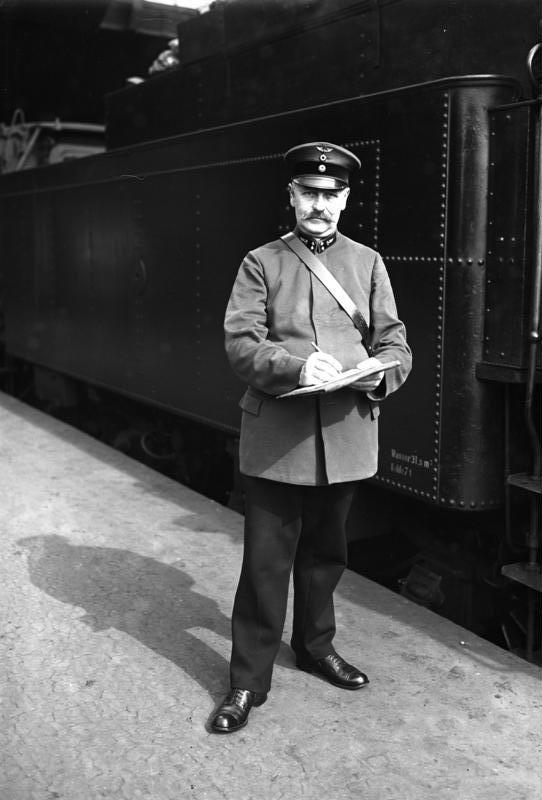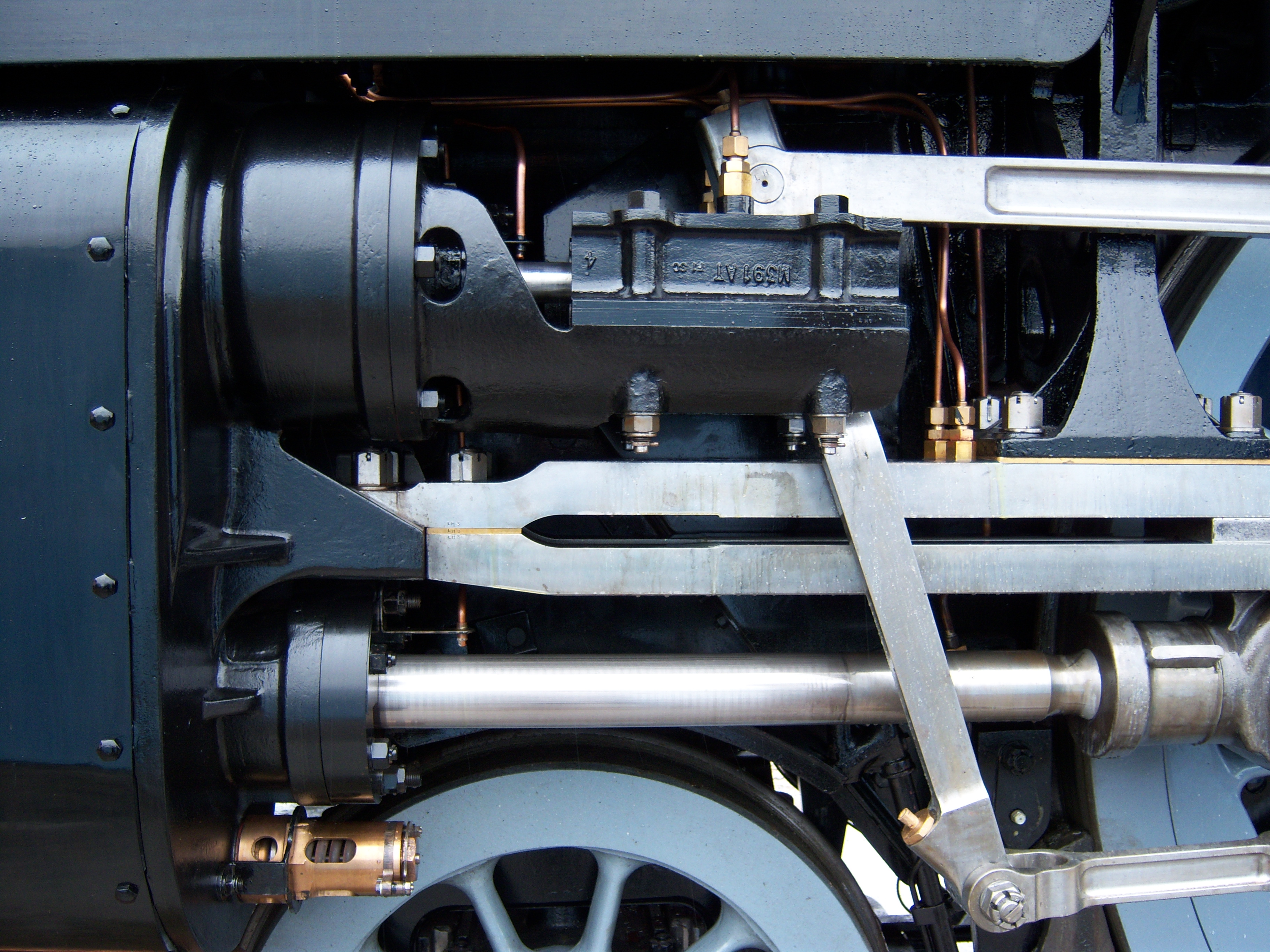|
Württemberg Ts 4
The DRG Class 99.17, formerly the Württemberg Ts 4 of the Royal Württemberg State Railways were German narrow gauge steam locomotives bought for working the 15.11 kilometre long route between the towns of Altensteig and Nagold. The three tank locomotives had an outer frame and a ''Klose'' drive. The first and third axles were steered by the third, radially-sliding axle by means of a system of levers. The second axle was driven by the inside cylinder and had no wheel flanges. Overall the system was very reliable, but nevertheless also very maintenance-intensive. The engines were delivered in 1891, 1892 and 1899, and later all taken over by the Reichsbahn. There they were given numbers 99 171–99 173. They also had the names ''Altensteig, Berneck'' and ''Ebhausen'' See also *Royal Württemberg State Railways *List of Württemberg locomotives and railbuses This list covers the locomotives and railbuses operated by the Royal Württemberg State Railways (''Königlich Württemb ... [...More Info...] [...Related Items...] OR: [Wikipedia] [Google] [Baidu] |
Maschinenfabrik Esslingen
Maschinenfabrik Esslingen (ME), was a German engineering firm that manufactured locomotives, tramways, railway wagons, roll-blocks, technical equipment for the railways, (turntables and traversers), bridges, steel structures, pumps and boilers. Founding It was founded by Emil Kessler on 11 March 1846 in Stuttgart, as a result of an initiative of the Kingdom of Württemberg to create a railway industry that was not dependent on foreign manufacturers. Emil Kessler brought vital experience from his time with the engineering works in Karlsruhe, where he had been a member of the board since 1837 and the sole director since 1842. The foundation stone of the new factory was laid at Esslingen am Neckar on 4 May 1846. One year later, in October 1847, the first locomotive ordered by the Royal Württemberg State Railways (''Königlich Württembergische Staats-Eisenbahnen'') or ''K.W.St. E.'' was delivered. History After the death of Emil Kessler in 1867 his 26-year-old son, Emil Ke ... [...More Info...] [...Related Items...] OR: [Wikipedia] [Google] [Baidu] |
Reichsbahn
The ''Deutsche Reichsbahn'', also known as the German National Railway, the German State Railway, German Reich Railway, and the German Imperial Railway, was the German national railway system created after the end of World War I from the regional railways of the individual states of the German Empire. The ''Deutsche Reichsbahn'' has been described as "the largest enterprise in the capitalist world in the years between 1920 and 1932"; nevertheless its importance "arises primarily from the fact that the Reichsbahn was at the center of events in a period of great turmoil in German history". Overview The company was founded on 1 April 1920 as the ("German Imperial Railways") when the Weimar Republic, which still used the nation-state term of the previous monarchy, (German Reich, hence the usage of the in the name of the railway; the monarchical term was ), took national control of the German railways, which had previously been run by the German states. In 1924 it was reorganised ... [...More Info...] [...Related Items...] OR: [Wikipedia] [Google] [Baidu] |
Railway Locomotives Introduced In 1891
Rail transport (also known as train transport) is a means of transport that transfers passengers and goods on wheeled vehicles running on rails, which are incorporated in Track (rail transport), tracks. In contrast to road transport, where the vehicles run on a prepared flat surface, rail vehicles (rolling stock) are directionally guided by the tracks on which they run. Tracks usually consist of steel rails, installed on Railroad tie, sleepers (ties) set in track ballast, ballast, on which the rolling stock, usually fitted with metal wheels, moves. Other variations are also possible, such as "slab track", in which the rails are fastened to a concrete foundation resting on a prepared subsurface. Rolling stock in a rail transport system generally encounters lower friction, frictional resistance than rubber-tyred road vehicles, so passenger and freight cars (carriages and wagons) can be coupled into longer trains. The rail transport operations, operation is carried out by a ... [...More Info...] [...Related Items...] OR: [Wikipedia] [Google] [Baidu] |
Esslingen Locomotives
Esslingen may refer to: Places * Esslingen (district), a district (''Landkreis'') of Baden-Württemberg in southern Germany * Esslingen am Neckar, capital city of the district of Esslingen * Esslingen, Switzerland, a village in Switzerland * Eßlingen, a municipality in western Germany Other * Maschinenfabrik Esslingen Maschinenfabrik Esslingen (ME), was a German engineering firm that manufactured locomotives, tramways, railway wagons, roll-blocks, technical equipment for the railways, (turntables and traversers), bridges, steel structures, pumps and boilers. ..., a former locomotive manufacturing company based in Esslingen am Neckar See also * Esslinger (other) {{disambiguation, geo ... [...More Info...] [...Related Items...] OR: [Wikipedia] [Google] [Baidu] |
Locomotives Of Württemberg
A locomotive or engine is a rail transport vehicle that provides the motive power for a train. If a locomotive is capable of carrying a payload, it is usually rather referred to as a multiple unit, motor coach, railcar or power car; the use of these self-propelled vehicles is increasingly common for passenger trains, but rare for freight (see CargoSprinter). Traditionally, locomotives pulled trains from the front. However, push-pull operation has become common, where the train may have a locomotive (or locomotives) at the front, at the rear, or at each end. Most recently railroads have begun adopting DPU or distributed power. The front may have one or two locomotives followed by a mid-train locomotive that is controlled remotely from the lead unit. __TOC__ Etymology The word ''locomotive'' originates from the Latin 'from a place', ablative of 'place', and the Medieval Latin 'causing motion', and is a shortened form of the term ''locomotive engine'', which was first ... [...More Info...] [...Related Items...] OR: [Wikipedia] [Google] [Baidu] |
Metre Gauge Steam Locomotives
The metre (British spelling) or meter (American spelling; see spelling differences) (from the French unit , from the Greek noun , "measure"), symbol m, is the primary unit of length in the International System of Units (SI), though its prefixed forms are also used relatively frequently. The metre was originally defined in 1793 as one ten-millionth of the distance from the equator to the North Pole along a great circle, so the Earth's circumference is approximately km. In 1799, the metre was redefined in terms of a prototype metre bar (the actual bar used was changed in 1889). In 1960, the metre was redefined in terms of a certain number of wavelengths of a certain emission line of krypton-86. The current definition was adopted in 1983 and modified slightly in 2002 to clarify that the metre is a measure of proper length. From 1983 until 2019, the metre was formally defined as the length of the path travelled by light in a vacuum in of a second. After the 2019 redef ... [...More Info...] [...Related Items...] OR: [Wikipedia] [Google] [Baidu] |
Narrow Gauge Steam Locomotives Of Germany
*
*
{{disambiguation ...
Narrow may refer to: * The Narrow, rock band from South Africa * Narrow banking, proposed banking system that would eliminate bank runs and the need for a deposit insurance * narrow gauge railway, a railway that has a track gauge narrower than the 4 ft 8½ in of standard gauge railways * Narrow vs wide format, a style of displaying tabular data * Narrowboat or narrow boat, a boat of a distinctive design made to fit the narrow canals of Great Britain * ''Narrow'' (album), a 2012 album by Austrian musical project Soap&Skin * "Narrow", a song by Mayday Parade from ''Black Lines'' See also * Narro (other) * The Narrows (other) * Narrowing (other) Narrowing may refer to: *Narrowing (computer science), a type of algorithm for solving equations between symbolic expressions **Narrowing of algebraic value sets, a method for the elimination of values from a solution set which are inconsistent wit ... [...More Info...] [...Related Items...] OR: [Wikipedia] [Google] [Baidu] |
List Of Württemberg Locomotives And Railbuses
This list covers the locomotives and railbuses operated by the Royal Württemberg State Railways (''Königlich Württembergische Staats-Eisenbahnen''), the national railway company of Württemberg, a state in southwest Germany that was part of the German Empire. In 1920 the Royal Württemberg State Railways, along with the other German state railways (Länderbahnen), were merged into the Deutsche Reichsbahn. Locomotive classification The Württemberg state railway first divided its locomotives into classes in 1845. This first categorisation into classes I to VII was based on the order in which individual vehicles were procured. The scheme proved to be unworkable in practice, so in 1858 a new system was introduced as follows: * A - Light express and fast-stopping train locomotives * B - Heavy express and fast-stopping train locomotives * C - Light passenger train locomotives * D - Heavy passenger train locomotives * E - Light goods train locomotives * F – Heavy goods t ... [...More Info...] [...Related Items...] OR: [Wikipedia] [Google] [Baidu] |
Cylinder (locomotive)
The cylinder is the power-producing element of the steam engine powering a steam locomotive. The cylinder is made pressure-tight with end covers and a piston; a valve distributes the steam to the ends of the cylinder. Cylinders were cast in iron and later made of steel. The cylinder casting includes other features such as (in the case of the early Rocket locomotive) valve ports and mounting feet. The last big American locomotives incorporated the cylinders as part of huge one-piece steel castings that were the main frame of the locomotive. Renewable wearing surfaces were needed inside the cylinders and provided by cast-iron bushings. The way the valve controlled the steam entering and leaving the cylinder was known as steam distribution and shown by the shape of the indicator diagram. What happened to the steam inside the cylinder was assessed separately from what happened in the boiler and how much friction the moving machinery had to cope with. This assessment was known as "e ... [...More Info...] [...Related Items...] OR: [Wikipedia] [Google] [Baidu] |
Klose Locomotive
Klose is a surname of German, Silesian, and West Slavic origins, and may refer to * Adolf Klose (1844–1923), German railroad engineer and inventor * Alfred Klose (1895–1953),( de) German mathematician * Anastasia Klose (born 1978), Australian artist * Annika Klose (born 1992), German politician * Bob Klose (born 1945), British musician and photographer * Friedrich Klose (1862–1942), German composer * Hans-Ulrich Klose (born 1937), German politician (SPD) * Hyacinthe Klosé (1808–1880), French composer and inventor of the Böhm clarinet system * Josef Klose (born 1947), Polish football player * Kevin Klose (born 1940), American public radio CEO * Kirsten Klose (born 1977), German hammer thrower * Margarete Klose (1899–1968), German opera singer (contralto) * Miroslav Klose (born 1978), German footballer * Samuel Gottlieb Klose, German Lutheran missionary - see German Australians#German missionaries * Timm Klose (born 1988), Swiss footballer See also * Kut Klose ... [...More Info...] [...Related Items...] OR: [Wikipedia] [Google] [Baidu] |
Adolf Klose
Adolf Klose (21 May 1844 – 2 September 1923) was the chief engineer of the Royal Württemberg State Railways in southern Germany from June 1885 to 1896. Klose was born in Bernstadt auf dem Eigen, in Saxony. Before his taking up his post in Stuttgart he had been the technical inspector of the United Swiss Railways (''Vereinigten Schweizerbahnen''). After a period of depending on Prussian prototypes between 1865 and 1885, a new engineering direction followed under Klose's time in office. It was stamped by numerous home-grown ideas and discoveries. In particular he promoted the introduction of compound working for steam locomotives in Württemberg. The patented Klose steering (''Klose-Lenkwerk'') carries his name. This was a multipartite and complex device for steam locomotives, which controlled the radial setting of leading and trailing wheelsets in order to improve curve running. Unfortunately, its costly maintenance and tendency to develop faults meant that his invention had ... [...More Info...] [...Related Items...] OR: [Wikipedia] [Google] [Baidu] |






